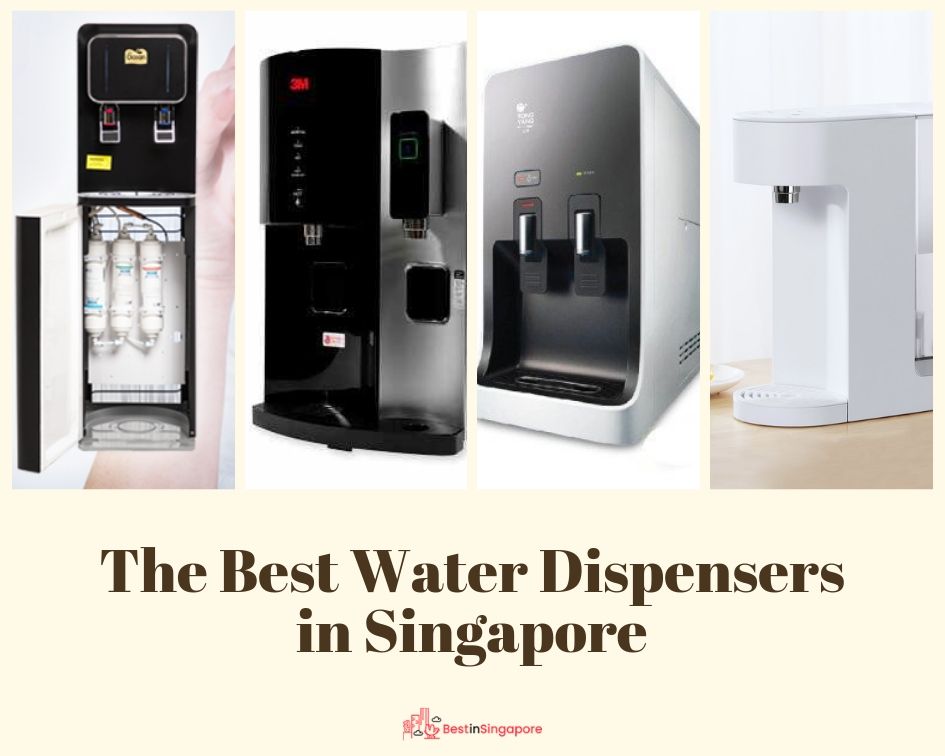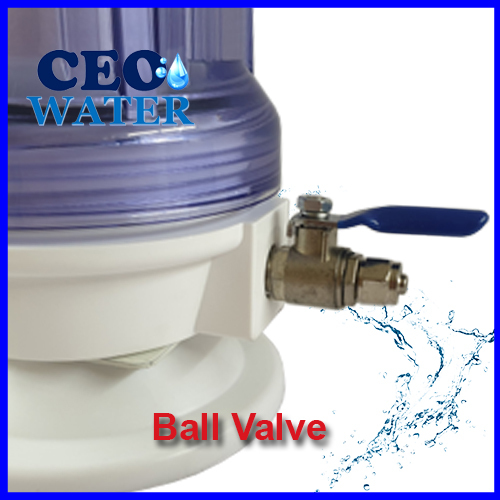Elken Water Filter. Elken Water Filter Bio Pure (Reverse Osmosis) with 5 Stage Filter to produce Perfect Water (H2O). It's a pretty smart technology. However, I consider this technology to be secondary to the ability of a system to filter contaminants from water. Both Elken and Coway have after sales service to help remind customer of the need to change the filter. So this is not an issue, unless you buy RO system from other brand or DIY type.
- Compare Elken Pre-Filter Cartridge K-Series prices in Malaysia and buy online at RM 15.00 💰 from Shopee, Lazada. 🔥 Harga Elken Pre-Filter Cartridge K-Series di Malaysia, December, 2020 price list.
- Stay safe online! Please make sure you login at the correct elken.com URL. Never login via suspicious links from emails that are not sent by Elken Sdn Bhd.
- Architected with the best technology and types of media, Bio Pure POE is a specially designed multi-media filter which can effectively reduce most of the contaminants to provide you clean water for your family’s use. Bio Pure POE can reduce sediment, odour, chlorine, ammonia and soluble heavy metals while inhibiting bacterial growth.
Elken Water Filter. Elken Bio Pure filter uses an advanced 5-stage Purification System to remove virtually all types of contaminants. Many filter companies claim that their filter can filter this and that but we proved to people that Biopure Elken can filter water straight from the river and make it drinkable. Pls watch the video. 👇 - Hari Year end promotion going on.Discount upto 30%.
Jump to navigationJump to searchA water filter removes impurities by lowering contamination of water using a fine physical barrier, a chemical process, or a biological process. Filters cleanse water to different extents for purposes such as providing agricultural irrigation, accessible drinking water, public and private aquariums, and the safe use of ponds and swimming pools.
- 2Types
- 3Certification in the United States
Methods of filtration[edit]
Filters use sieving, adsorption, ion exchanges and other processes to remove unwanted substances from water. Unlike a sieve or screen, a filter can potentially remove particles much smaller than the holes through which its water passes.
Types[edit]
Water treatment plant filters[edit]
Types of water filters include media filters, screen filters, disk filters, slow sand filter beds, rapid sand filters, cloth filters,[1] and biological filters such as algae scrubbers.
Point-of-use filters[edit]
Point-of-use filters for home use include granular-activated carbon filters (GAC) used for carbon filtering, depth filter, metallic alloy filters, microporous ceramic filters, carbon block resin (CBR), microfiltration and ultrafiltration membranes. Some filters use more than one filtration method. An example of this is a multi-barrier system. Jug filters can be used for small quantities of drinking water. Some kettles have built-in filters, primarily to reduce limescale buildup.
Standard Flowmatic cartridge style filters are added to existing plumbing; the filter cartridges are cylinders 10 inches (254 mm) long by 2.5 inches (64 mm) in diameter. They are made by multiple manufactures and are available in 0.5-100 micron ratings as well as activated carbon.[2]
Some common substances that filtration does not remove are arsenic, bacteria, chlorides, fluoride, nitrates, perchlorates, pharmaceuticals, sodium and viruses.[3]
Portable water filters[edit]

Water filters are used by hikers,[4] aid organizations during humanitarian emergencies, and the military. These filters are usually small, portable and lightweight (1-2 pounds/0.5-1.0 kg or less), and usually filter water by working a mechanical hand pump, although some use a siphon drip system to force water through while others are built into water bottles. Dirty water is pumped via a screen-filtered flexible silicon tube through a specialized filter, ending up in a container. These filters work to remove bacteria, protozoa and microbial cysts that can cause disease. Filters may have fine meshes that must be replaced or cleaned, and ceramic water filters must have their outside abraded when they have become clogged with impurities.
These water filters should not be confused with devices or tablets that disinfect water which remove or kill viruses such as hepatitis A and rotavirus.
Certification in the United States[edit]
How To Service Elken Water Filter
Three organizations are accredited by the American National Standards Institute, and each one of them certified products using American National Standard Institute/National Science Foundation standards. Each American National Standards Institute/National Science Foundation standard requires verification of contaminant reduction performance claims, an evaluation of the unit, including itsmaterials and structural integrity, and a review of the product labels and sales literature. Each certifies that home water treatment units meet or exceed National Standard Institute/National Science Foundation and Environmental Protection Agency drinking water standards. American National Standard Institute/National Science Foundation standards are issued in two different sets, one for health concerns (such as removal of specific contaminants (Standard 53, Health Effects) and one for aesthetic concerns (Aesthetic Effects, such as improving taste or appearance of water). Certification from these organizations will specify one or both of these specific standards.
NSF International[edit]
NSF International as it is now known started out as the National Sanitation Foundation in 1944 at the University of Michigan School of Public Health. [5] The NSF's water treatment Device Certification Program requires extensive product testing and unannounced audits of production facilities. One goal of this not for profit organization is to provide assurance to consumers that the water treatment devices they are purchasing meet the design, material, and performance requirements of national standards.[5]
Underwriters Laboratories[edit]
Elken Water Purifier
Underwriters Laboratories, Inc., is an independent, accredited testing and certification organization that certifies home water treatment units which meet or exceed EPA and American National Standard Institute/National Science Foundation drinking water standards of contaminant reduction, aesthetic concerns, structural integrity, and materials safety.
Elken Water Filter Installation

Water Quality Association[edit]
The Water Quality Association is a trade organization that tests water treatment equipment, and awards its Gold Seal to systems that meet or exceed ANSI/NSF standards for contaminant reduction performance, structural integrity, and materials safety.[6]
Filters that use reverse osmosis, those labeled as “absolute one micron filters,” or those labeled as certified by an American National Standards Institute (ANSI)- accredited organization to American National Standard Institute/National Science Foundation Standard 53 for “Cyst Removal” provide the greatest assurance of removing Cryptosporidium. As with all filters, follow the manufacturer’s instructions for filter use and replacement.[7]
Water polishing[edit]
The term water polishing can refer to any process that removes small (usually microscopic) particulate material, or removes very low concentrations of dissolved material from water. The process and its meaning vary from setting to setting: a manufacturer of aquarium filters may claim that its filters perform water polishing by capturing 'micro particles' within nylon or polyester pads just as a chemical engineer can use the term to refer to the removal of magnetic resins from a solution by passing the solution over a bed of magnetic particulate.[8] In this sense, water polishing is simply another term for whole house water filtration systems. Polishing is also done on a large scale in water reclamation plants.[9]
History[edit]
During the 19th and 20th centuries, water filters for domestic water production were generally divided into slow sand filters and rapid sand filters (also called mechanical filters and American filters). While there were many small-scale water filtration systems prior to 1800, Paisley, Scotland is generally acknowledged as the first city to receive filtered water for an entire town. The Paisley filter began operation in 1804 and was an early type of slow sand filter. Throughout the 1800s, hundreds of slow sand filters were constructed in the UK and on the European continent. An intermittent slow sand filter was constructed and operated at Lawrence, Massachusetts in 1893 due to continuing typhoid fever epidemics caused by sewage contamination of the water supply.[10] The first continuously operating slow sand filter was designed by Allen Hazen for the city of Albany, New York in 1897.[11] The most comprehensive history of water filtration was published by Moses N. Baker in 1948 and reprinted in 1981.[10]
In the 1800s, mechanical filtration was an industrial process that depended on the addition of aluminium sulfate prior to the filtration process. The filtration rate for mechanical filtration was typically more than 60 times faster than slow sand filters, thus requiring significantly less land area. The first modern mechanical filtration plant in the U.S. was built at Little Falls, New Jersey for the East Jersey Water Company. George W. Fuller designed and supervised the construction of the plant which went into operation in 1902.[12] In 1924, John R. The notorious b i g ready to die zippy. Baylis developed a fixed grid backwash assist system which consisted of pipes with nozzles that injected jets of water into the filter material during expansion.[13]
See also[edit]
References[edit]
- ^'Types of Filters'. Mountain Empire Community College. Retrieved 2008-10-01.
- ^'Watts Flowmatic Water Systems and Filters including reverse osmosis water filtration systems'. Filtersfast.com. Retrieved 23 August 2018.
- ^'Contaminant Reduction Claims Guide - NSF International'. Nsf.org. Retrieved 23 August 2018.
- ^Leadem, Tim (2015-04-20). Hiking the West Coast of Vancouver Island: An Updated and Comprehensive Trail Guide. Greystone Books. ISBN9781771641470.
- ^ ab'Mission, Values and History - NSF International'. Nsf.org. Retrieved 2016-06-30.
- ^'Who We Are'. Lisle, IL: Water Quality Association. Retrieved 2018-05-02.
- ^'Water Health Series: Filtration Facts'. Washington, D.C.: United States Environmental Protection Agency (EPA). September 2005. Brochure. 816-K-05-002.
- ^'Water Polishing Process.' (Patent description.) Retrieved 2009-11-26.
- ^'ALGAL TURF SCRUBBER SYSTEMS FOR POLLUTION CONTROL'(PDF). Hydromentia.com. Retrieved 2016-06-30.
- ^ abBaker, Moses N. (1981). The Quest for Pure Water: the History of Water Purification from the Earliest Records to the Twentieth Century. 2nd Edition. Vol. 1. Denver: American Water Works Association, 64-80.
- ^“Allen Hazen.” (1930). Jour. American Water Works Association. 22:9, 1268-70.
- ^Fuller, George W. (1902). “The Filtration Works of the East Jersey Water Company, at Little Falls, New Jersey.” Transactions of the ASCE. 29 (February)): 153-202.
- ^Baylis, John R. (1959). 'Review of Filter Bed Design and Methods of Washing.' Journal AWWA. 51:11 1433-54.
External links[edit]
| Wikisource has the text of The New Student's Reference Work article 'Filter'. |
- Media related to Water filters at Wikimedia Commons

Elken Water Filter Manual Briggs And Stratton
| Size (Height x Diameter): | 40 x 9 inches (approx) |
| Weight: | 4.2kg |
| Tank Material: | Outer – FRP (Fiber Reinforced Plastic) Inner – Polyethylene food grade material |
| Filtration Media: | Multi-media – 4 superior grade media |

